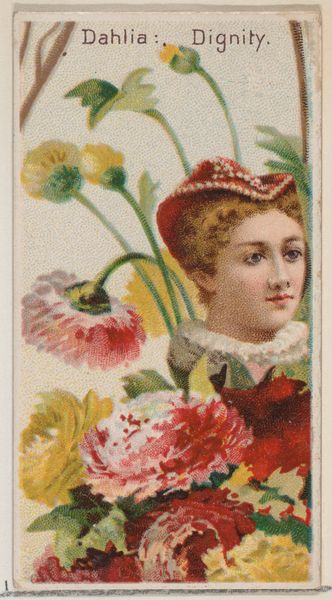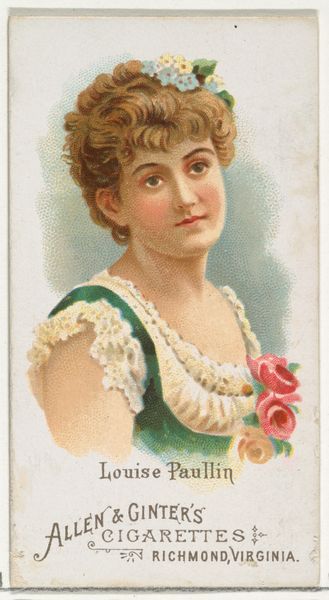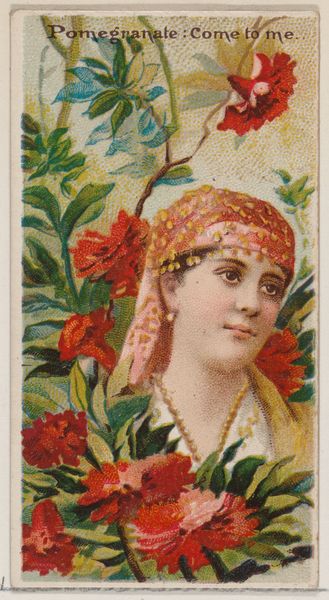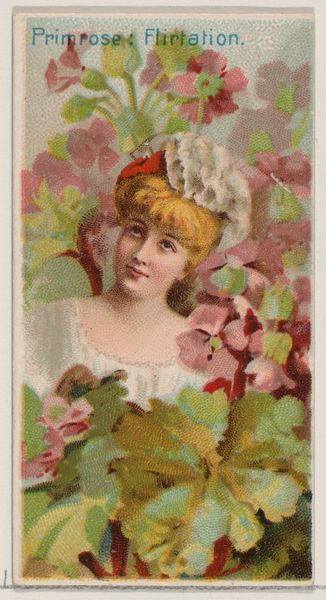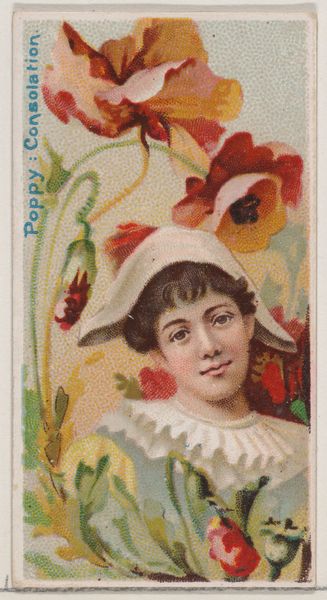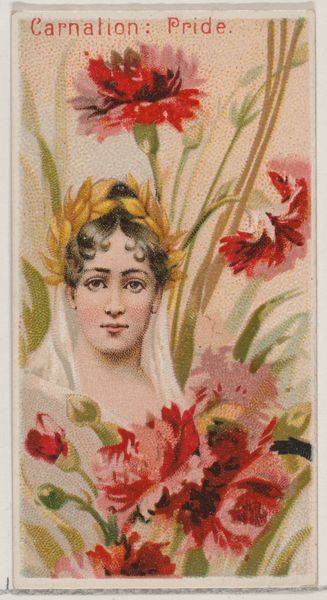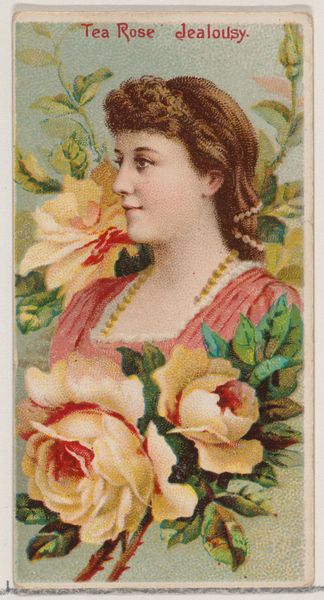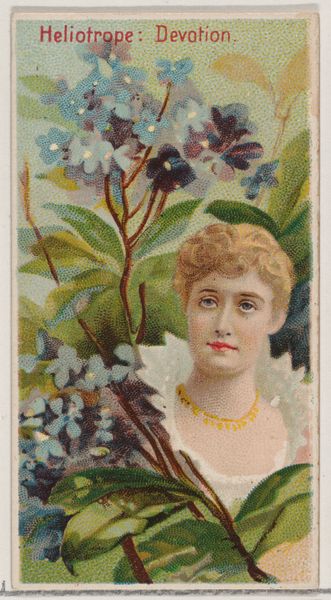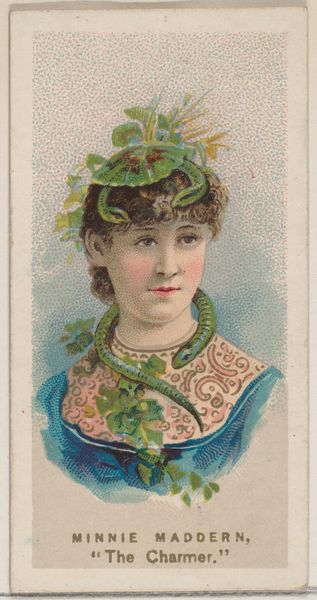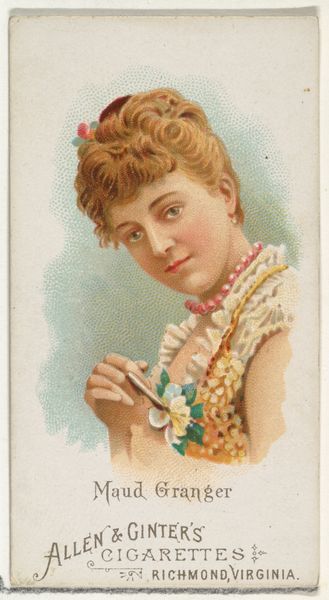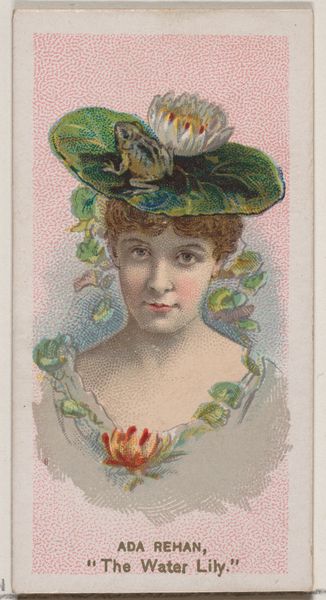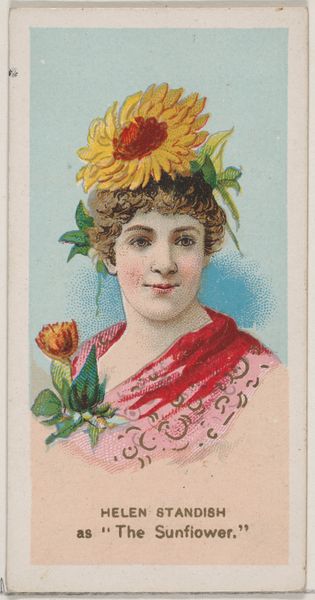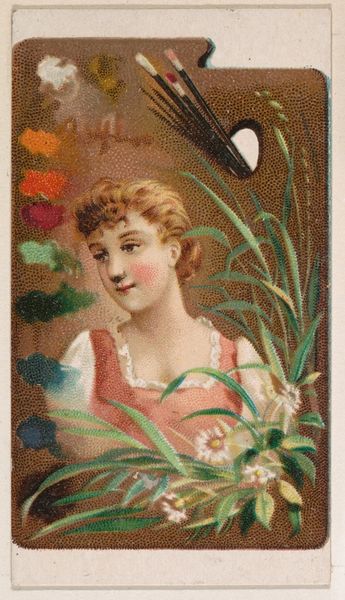
Hollyhock: Ambition, from the series Floral Beauties and Language of Flowers (N75) for Duke brand cigarettes 1892
0:00
0:00
drawing, print, watercolor
#
portrait
#
drawing
#
art-nouveau
# print
#
watercolor
#
decorative-art
#
watercolor
Dimensions: Sheet: 2 3/4 × 1 1/2 in. (7 × 3.8 cm)
Copyright: Public Domain
Curator: This is "Hollyhock: Ambition" from the series "Floral Beauties and Language of Flowers," created in 1892 for Duke brand cigarettes by the American Tobacco Company. The medium used appears to be watercolor and print. Editor: It has an air of dreamy idealism, doesn't it? Almost saccharine with its pastel shades and idealized portrait. I wonder what associations people at the time had with this kind of imagery. Curator: Well, consider the means of its production. These cards were essentially promotional tools. Cheaply made, widely distributed. But the lithographic process allowed for a degree of color and detail that would have been appealing. These cards served as advertisements and collected as sets of desirable items for trade, which contributed to their popular appeal beyond being a means of marketing tobacco. Editor: Precisely. These floral cards, with their implied 'language,' presented an image of delicate femininity deeply interwoven with the branding of tobacco. What kind of social impact does something like that produce when ideas surrounding what it means to be feminine, along with capitalism are interwoven? How do they normalize each other? Curator: It's fascinating how the materials and mass production intersect with the intended message. The medium, in a sense, *is* the message, influencing how "ambition" and femininity are perceived in conjunction with commodity culture. The floral element combined with portraiture on mass-produced cards elevated cigarette cards to more than simply packaging and allowed tobacco to find a more refined placement. Editor: And that message itself! “Ambition," embodied by a flower and a pretty woman. What facets of ambition are actually elevated here? Are we talking about ambition as a form of self-empowerment, or more so ambition aligned with capitalist gain? I think the consumption habits cultivated alongside these cards provide an insightful window into that social construction. Curator: The ambiguity is palpable. Is it ambition in a personal sphere, or is it meant to encourage a wider consumer ambition fueled by the promises that late-19th-century America offered? We can ponder the labor conditions behind cigarette production while we analyze this very card, which served to further promote consumption! It’s an artwork entrenched in consumerist history, to say the least. Editor: Absolutely, it all speaks volumes about the commercial manipulation of social desires in its time—ideas still very relevant to our own. The image can really ignite an inquiry into those intersections. Curator: Indeed. Thinking about it that way makes the work much richer, doesn’t it? It really prompts us to explore how our very definitions of work and aspiration have come to be through objects just like these.
Comments
No comments
Be the first to comment and join the conversation on the ultimate creative platform.
